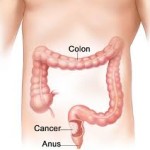 Every day 44% of Americans are taking a vitamin or dietary supplement which increases the risk of vitamin toxicity. 84% of Americans consider vitamins safe, no matter which vitamin they were discussing. In 2007, vitamin C, vitamin E and multivitamins were among the five best selling supplements in the United States. The risk of vitamin toxicity increases when people are unaware of how vitamin are utilized, stored and excreted from the body.
Every day 44% of Americans are taking a vitamin or dietary supplement which increases the risk of vitamin toxicity. 84% of Americans consider vitamins safe, no matter which vitamin they were discussing. In 2007, vitamin C, vitamin E and multivitamins were among the five best selling supplements in the United States. The risk of vitamin toxicity increases when people are unaware of how vitamin are utilized, stored and excreted from the body.
It wasn’t until the early 1980s that researchers and scientists began to identify the different types of vitamins which the body requires for optimal health. Even today, researchers have not yet identified every thing that this complex organism we call the human body requires in order to function at its best.
Today we know that there are two broad categories of vitamins. The first are water soluble vitamins which are easily excreted through the kidneys when maximum amount of vitamin has been achieved. In other words, vitamin C is a water soluble vitamin that we can take in large doses without fear of bad side effects from toxicity, diarrhea and abdominal cramping. On the other hand, vitamin E is a fat soluble vitamin which is stored in the fat cells of the body for later use. The body is able to store excess amounts of vitamin E, which can lead to toxicity and significant side effects.
Vitamins are organic molecules needed in small amounts for adequate growth, reproduction and maintenance of good health. Fat soluble vitamins include vitamin D, vitamin E, vitamin A and vitamin K. The remainder of the vitamins can be dissolved in water and are called water soluble vitamins which include the vitamin B complex and vitamin C.
Vitamins are used for the treatment of a variety of diseases as well as to help reduce the risk of developing diseases. For example, women are encouraged to take folic acid supplementation when they are in childbearing years because a lack of folic acid in the first 28 days of gestation can result in a neural tube defect in a developing baby.
Iron is a known chemical found in multivitamins which can negatively affect the immune system and the bony structures of the body when found in excess. Men and postmenopausal women should never take multivitamins which contain iron for this reason. Only menstruating women should have iron supplementation to make up for the extra blood loss every month.
Toxicity from vitamin intake is a condition which develops from taking massive doses of either a multivitamin or specific individual vitamins. Vitamins will differ in the amount that are required to cause toxic symptoms and in the specific symptoms that result. This is often referred to as vitamin poisoning which is becoming more common because of the popularity of vitamin supplementation and people treating themselves for minor illnesses with mega doses of vitamins.
 Vitamin D and vitamin A are the most toxic of the fat soluble vitamins. Symptoms of vitamin D toxicity are nausea, vomiting, abdominal pain and loss of appetite. Individuals can also experience constipation which alternates with diarrhea or have a tingling sensation in their mouth. The dosage required to bring on toxic side effects will differ depending upon the size and age of the individual. The dosage will be much smaller in an infant (a single dose of 15 mg or greater) or in adults (a daily dose of greater than 1 mg over a long period of time or a single dose of 50 mg). The immediate effect is abdominal cramping, nausea and vomiting. Prolonged exposure can result in irreversible deposits of crystals damaging the heart, lungs and kidney. (1,2)
Vitamin D and vitamin A are the most toxic of the fat soluble vitamins. Symptoms of vitamin D toxicity are nausea, vomiting, abdominal pain and loss of appetite. Individuals can also experience constipation which alternates with diarrhea or have a tingling sensation in their mouth. The dosage required to bring on toxic side effects will differ depending upon the size and age of the individual. The dosage will be much smaller in an infant (a single dose of 15 mg or greater) or in adults (a daily dose of greater than 1 mg over a long period of time or a single dose of 50 mg). The immediate effect is abdominal cramping, nausea and vomiting. Prolonged exposure can result in irreversible deposits of crystals damaging the heart, lungs and kidney. (1,2)
Vitamin A toxicity can also happen with a long-term consumption of 20 mg of retinol or more per day. The symptoms include hydrocephalus, vomiting, fatigue, constipation, bone pain and severe headaches. This can cause a rough and dry appearance and the individual will lose their hair. This is a special issue during pregnancy since mothers who take 10 mg of vitamin A or more on a daily basis can have a child who was born with birth defects. (3,4)
It is also possible to take in toxic levels of vitamin A by eating large quantities of certain foods such as beef liver or eggs.
Vitamin E can produce headaches, tiredness, double vision and diarrhea in humans. Animal studies have shown that large doses of vitamin E can interfere with the absorption of other fat soluble vitamins and large doses over many weeks can result in deficiencies of vitamin D, vitamin A and vitamin K. (5)
Prolonged consumption of large doses of vitamin K will result in anemia when there is a reduced number of red blood cells in the blood stream. An infant will experience deposits of pigments in the brain, nerve cells and destruction of the red blood cells as well as death.
Vitamin toxicity from water soluble vitamins is much less common. Niacin is one water soluble vitamin that has been known to produce a common toxic side effect which results in the flushing of the skin. It also causes nausea, diarrhea and liver damage. In spite of the side effects, large doses of niacin are used to lower blood cholesterol in order to prevent heart disease. Although the flushing skin is a side effect that happens when the therapy is started it can disappear with continued therapy.
In all cases the treatment for toxicity requires discontinuing the supplementation. Vitamin D toxicity will need additional actions to reduce the calcium levels in the blood stream because severe hypercalcemia is a medical emergency. The prognosis is usually excellent and side effects usually go away as soon as the overdoses are stopped. The exceptions are severe vitamin D toxicity which leads to deposits of calcium salts in the soft tissue of the body, birth defects due to vitamin A toxicity and damage to the nervous system caused by mega doses of vitamin B6.
References:
(1) American Journal of Clinical Nutrition: Pharmacokinetics of Vitamin D Toxicity
http://www.ncbi.nlm.nih.gov/pubmed/18689406
(2) MedlinePlus: Hypervitaminosis D
http://www.nlm.nih.gov/medlineplus/ency/article/001594.htm
(3)Offic of Dietary Supplements National Institutes of Health: Vitamin A
http://ods.od.nih.gov/factsheets/VitaminA-HealthProfessional/
(4) American Journal of Clinical Nutrition: The Acute and Chronic Toxic Effects of Vitamin A
http://ajcn.nutrition.org/content/83/2/191.full
(5) Merck Manual: Vitamin E
http://ajcn.nutrition.org/content/83/2/191.full


Vitamin B6 Toxicity is becoming increasingly frequent even on small doses in multivitamins. They need to stop fortifying Foods with and adding it to tons of drinks.